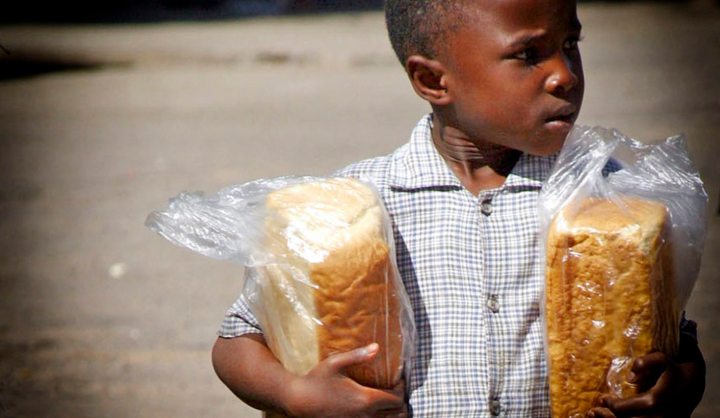South Africa
Analysis: South Africa’s CPI reveals how volatile inflation hurts the poorest

The combined effect of the severe drought and the depreciation of the rand drove annual food inflation to 9.8% in March, its highest level in four years. Periods of high food inflation often spark an outpouring of concern over its impact on the poor. By PATRICK KELLY.
Usually the intention of such analysis is to advocate for increased welfare benefits for the poor. These concerns are not without foundation, as food makes up more than 40% the poor’s overall expenses – a greater proportion than any other income group. Other large components which make up a poor family’s expenses are housing, alcohol and tobacco and transport. Price changes in these categories also affect their living standards.
The Consumer Price Index (CPI) is sometimes incorrectly cited to illustrate how official statistics fail to capture the experience of the poor. South Africa’s national inflation rate, in line with most equivalent measures around the world, is based on the total expenditure of all South African consumers. Because higher earners spend more, they implicitly exert greater influence on the overall CPI basket. With the knowledge that the CPI better reflects the working or middle class, rather than the poor, Stats SA publishes numerous additional price indices to analyse changes in the cost of living of specific income and geographic groups.
The CPI is based on scientifically representative surveys of households and prices and therefore provides a trustworthy basis for measured analysis. While the products in the CPI basket are standardised, the importance (weight) attached to each of these varies according to the particular index being constructed. Additional indices are compiled for specific income groups, provinces, small and large urban areas as well as rural areas. The prices for each geographic area, including the rural CPI, are collected in the area in which each particular product is usually purchased.
It is true that in times of high food inflation, the poor experience higher overall inflation than the average consumer and that inflation of the poor’s food basket increases more rapidly than that of all other groups. However, the inverse is true during times of low food inflation. In these periods, food baskets of rural residents and the poorest quintile show markedly slower inflation than all other groups. This relationship is found in 90% of the months from January 2008 to March 2016, with accumulated inflation of the poor since 2013 (when the CPI was last rebased) currently being only fractionally higher than headline.
As an illustration of this pattern, while headline annual food inflation was 9.8% in March this year, it was 13.6% for rural residents and 11.8% for the poorest households. However, in May 2015 when the headline food inflation figure was 4.6%, rural residents paid 2.8% more for food and the poor 3.8% more. The poor therefore experience greater variability in inflation, with high inflation periods leading to more financial stress, but low inflation periods providing a relative measure of relief. In the long run, both the food and total inflation experienced by the poor and rural residents is approximately equivalent to the country as a whole. This would suggest that that short term, targeted, relief measures during high inflation periods are more needed than additional permanent welfare interventions.
Households change their spending patterns over time in response to a variety of factors including changes in prices, product availability, technology, income and tastes. In particular, buying down to cheaper varieties and smaller package sizes is common during high inflation periods to manage overall spend. This substitution mitigates the impact of price rises. Because Stats SA only updates the CPI weights every three to five years, short-term substitution is not captured and will result in the CPI being higher than the actual inflation experienced by households. This is in contrast to the perception of many that the CPI typically underestimates inflation.
Updating the CPI basket and weights as often as possible is therefore critical to an accurate inflation rate. The weights of the CPI currently reflect spending patterns from 2012. Spending patterns of households across the country were surveyed last year and these results will lead to a new basket and weights from the beginning of 2017. This survey is expensive to conduct because it must account for expenditure covering a whole year and is more complex than other household surveys. Its value is not only in updated weights for the CPI, it also provides insights into the living conditions and poverty levels of South Africans – a robust measure of the impact of changing prices and economic conditions. DM
Patrick Kelly is Executive Manager of Price Statistics at Statistics South Africa.
















